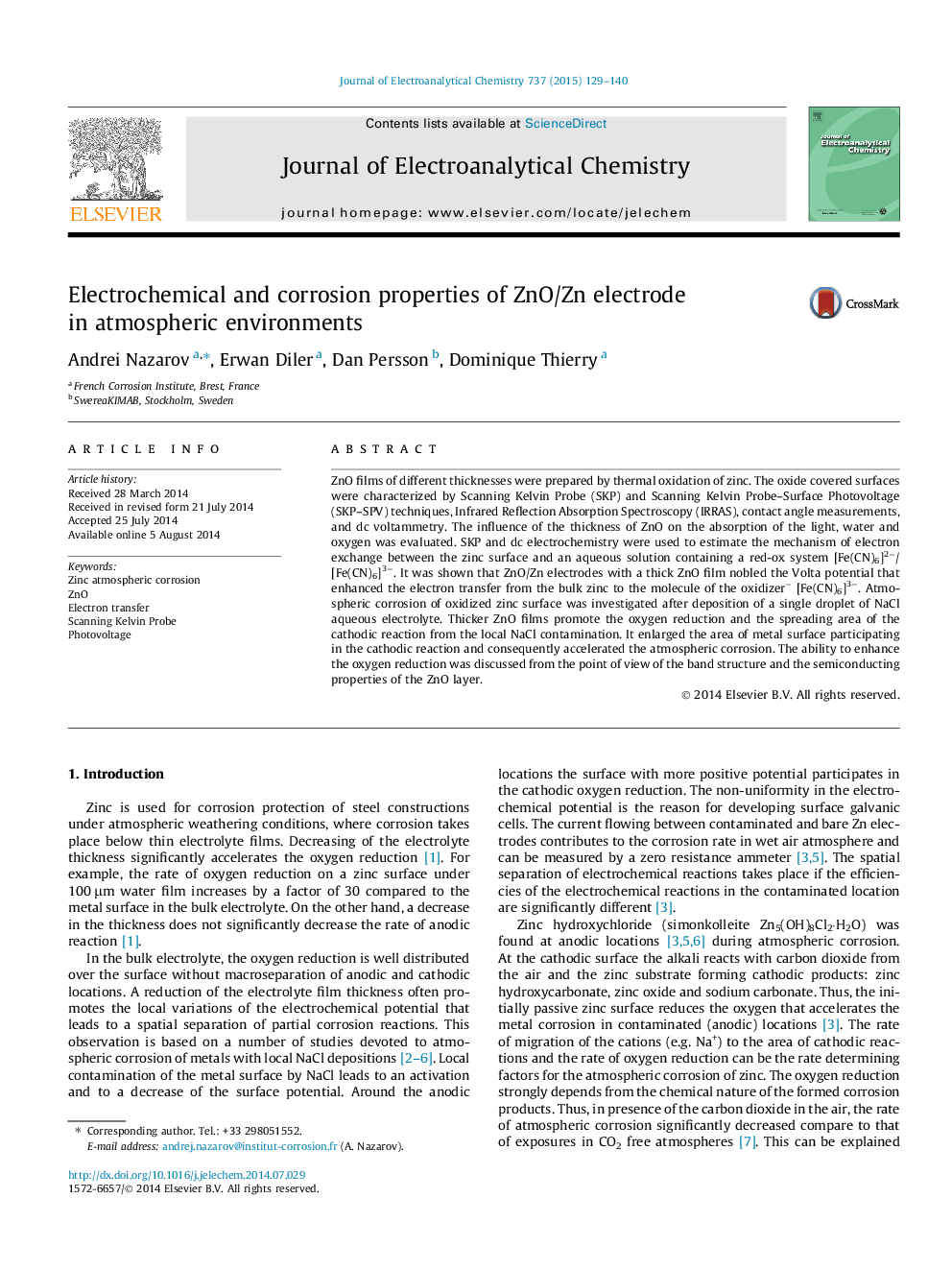| Article ID | Journal | Published Year | Pages | File Type |
|---|---|---|---|---|
| 218521 | Journal of Electroanalytical Chemistry | 2015 | 12 Pages |
•ZnO films on Zn were thermally grown and studied by SKP and IRRAS.•The potential drop across Zn/ZnO/air interfaces was described.•The photoeffect in ZnO and in the layer of corrosion products was evaluated.•Thick ZnO film easily exchanges the electrons with adsorbed oxidizer.•We report the role of ZnO on efficiency of cathodic reaction and Zn corrosion.
ZnO films of different thicknesses were prepared by thermal oxidation of zinc. The oxide covered surfaces were characterized by Scanning Kelvin Probe (SKP) and Scanning Kelvin Probe–Surface Photovoltage (SKP–SPV) techniques, Infrared Reflection Absorption Spectroscopy (IRRAS), contact angle measurements, and dc voltammetry. The influence of the thickness of ZnO on the absorption of the light, water and oxygen was evaluated. SKP and dc electrochemistry were used to estimate the mechanism of electron exchange between the zinc surface and an aqueous solution containing a red-ox system [Fe(CN)6]2−/[Fe(CN)6]3−. It was shown that ZnO/Zn electrodes with a thick ZnO film nobled the Volta potential that enhanced the electron transfer from the bulk zinc to the molecule of the oxidizer− [Fe(CN)6]3−. Atmospheric corrosion of oxidized zinc surface was investigated after deposition of a single droplet of NaCl aqueous electrolyte. Thicker ZnO films promote the oxygen reduction and the spreading area of the cathodic reaction from the local NaCl contamination. It enlarged the area of metal surface participating in the cathodic reaction and consequently accelerated the atmospheric corrosion. The ability to enhance the oxygen reduction was discussed from the point of view of the band structure and the semiconducting properties of the ZnO layer.
